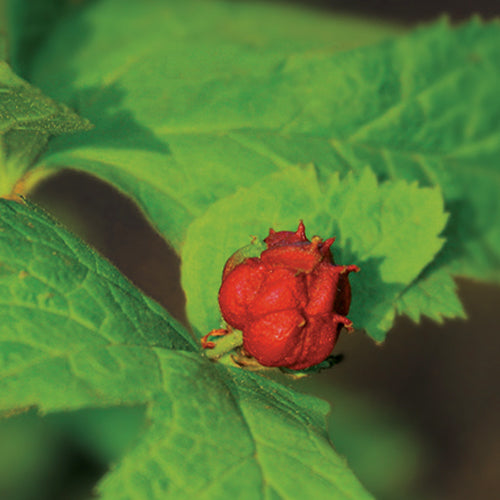Goldenseal Plant: A Legacy of Healing
Goldenseal Plant's roots' bright yellow color indicated their richness in berberine and other alkaloids which led to their high value for antibacterial and anti-inflammatory benefits. Traditional healers brewed the plant into tea or tincture to address infections along with digestive problems and skin ailments.
Herbalists and early North American medical practitioners observed its therapeutic properties throughout the 1800s. Apothecaries routinely stocked this remedy because practitioners commonly prescribed it for respiratory infections and liver conditions as well as eye inflammation. People started using it as an antiseptic and immune strengthening agent throughout the early 1900s. Modern herbal practitioners continue to use this herb for immune system support and gut health enhancement through combinations with echinacea that create powerful synergistic effects.
Goldenseal Plant Is A Visual Treasure in the Forest
The woodlands showcase this botanical gem as its most prominent feature because it thrives there. During early spring the plant reveals lush deep-green foliage which fans out displaying a unique textured wrinkled surface that stands out visually. Individual plants feature one delicate white bloom that eventually turns into a bright red fruit. Although the fruit resembles a berry it cannot be eaten yet it performs essential roles in the environment.

This species thrives in shaded areas where the soil retains moisture and grows in groups to create a distinctive leafy cover on the forest floor. The striking difference between deep green leaves and bright crimson fruit creates a visually intriguing aspect that makes it highly sought after by woodland garden enthusiasts.
A Coveted Choice for Landscaping
Goldenseal Plant provides gardeners and conservationists with a sophisticated yet practical choice for incorporating native species into their landscapes. This plant flourishes in moist, well-draining soil under tree canopies and works well in shade gardens and naturalized woodland settings. The plant functions as a perfect ground covering because its dense foliage fills spaces between taller perennials to produce a naturally layered appearance.
This plant species becomes extremely easy to maintain after establishment because it requires very little attention. The plant is well-suited to grow in dappled shade conditions which makes it an ideal partner for ferns, trillium, and wild ginger. This plant serves as an essential historical and ecological feature when restoring native habitats or when enhancing shaded garden paths.
Goldenseal Plant Is Perfect For Luring Wildlife
This forest-dwelling marvel serves as a critical habitat for many of nature's most hidden creatures. The vivid red fruit of this plant attracts multiple species of small mammals and birds even though humans cannot consume it. Various thrush species show a particular attraction to the berries which helps spread their seeds.
Goldenseal Plant shelters various insects and native pollinators that visit its early spring flowers. The flowers of this plant appear subtle but support woodland biodiversity as they provide nectar to specialized pollinators who depend on native plants. The thick vegetation serves as a sanctuary for tiny amphibians like woodland toads and salamanders that search for the cool moist conditions within.
The existence of this species in natural environments indicates a well-functioning ecosystem at its peak. The significance of the plant has been acknowledged by conservationists who work to protect its natural environment so that the uncommon wildlife it hosts can thrive.
Preserving Goldenseal Plant a Timeless Botanical Wonder
This treasured plant which has delivered ecological benefits through centuries faces survival challenges because of excessive harvesting and habitat destruction. The increased demand for its medicinal properties led to a population decline among wild specimens and triggered protective conservation measures. The practice of ethical cultivation and sourcing today aims to preserve this plant so future generations can understand its historical and medicinal value and ecological importance.
North America's natural heritage includes Goldenseal Plant which serves both traditional healing practices and woodland wildlife support. Its legacy remains a symbol of deep plant-world connections because of its beauty, admiration, medicinal cultivation, and protection for supporting wildlife.